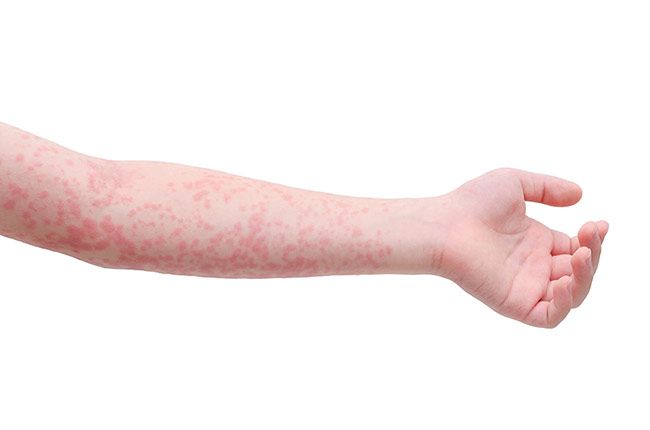Doctors have warned parents to be aware of the symptoms of scarlet fever, as cases have soared to the highest level in the UK since the 1960s. Public Health England has said that the bacterial infection is known to strike in the winter and spring months, and is most common between children aged two to eight years.
Dr Theresa Lamagni, from Public Health England, said: "Whilst current rates are nowhere near those seen in the early 1900s, the magnitude of the recent upsurge is greater than any documented in the last century. We are strongly urging people with symptoms of scarlet fever, which include a sore throat, headache and fever accompanied by a characteristic rash, to consult their GP." So what is scarlet fever? And how can it be recognised in children? We've rounded up the signs and symptoms you need to know…
What is scarlet fever?
Scarlet fever is an infection that causes a blotchy pink-red rash. It is most common in young children, but can affect people of any age. It isn't usually serious and can be treated with antibiotics from your GP.
MORE: See the latest health and fitness stories here
What are the symptoms of scarlet fever?
Symptoms of scarlet fever develop within a week of being infected, with early signs including a headache, sore throat, high temperature, being sick, and swollen glands in the neck. One of the most obvious signs of scarlet fever is a rash on the body, a red face and a white or red tongue.
The scarlet fever rash –
Typically starts on the chest or stomach, before spreading to other areas. It is made up of pink-red blotches and turns white if you press a glass on it. The rash typically feels like sandpaper and may be brightest red in body folds, such as the elbows or armpits.
Red face and white or red tongue –
While the rash doesn't typically spread to the face, the cheeks may turn very red and look a bit like sunburn. A white coating may also form on the tongue, and peel away after a few days, leaving the tongue red and swollen.
What is the treatment for scarlet fever?
See your GP as soon as possible if you or your child has symptoms of scarlet fever. Your doctor will typically diagnose scarlet fever by looking at the rash, or they may use a cotton bud to remove a bit of saliva from the throat for testing. Treatment with antibiotics is typically recommended to reduce the length of time the infection is contagious, speed up recovery and reduce risk of any further problems.










